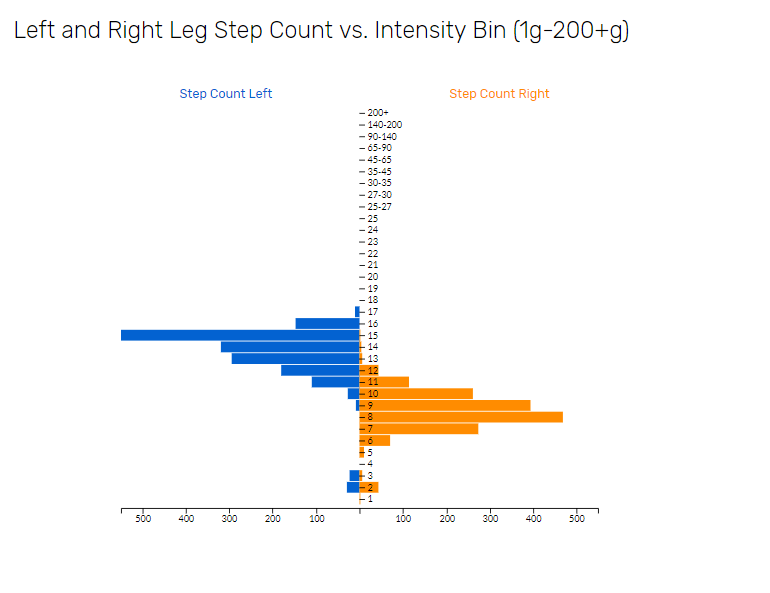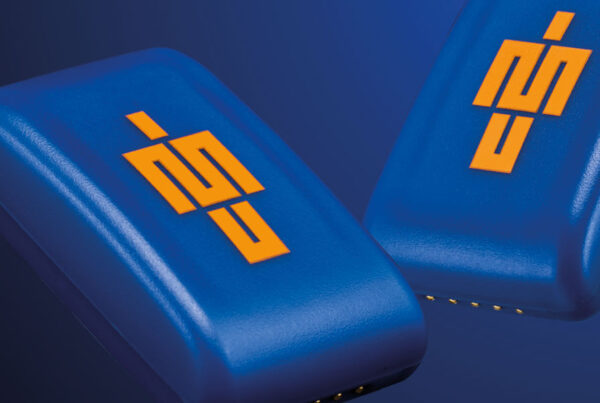How strength and conditioning coach Chris Wright used IMU Step & inertial sensors to help Loughborough Lightning athlete, Caroline Tarnowski, return to performance safely and quickly
Loughborough University has long been known as the most prestigious sporting university in the UK. Paula Radcliffe, Dame Tanni Grey-Thompson, and Sir Clive Woodward are just some of the names to have graduated from the university. In more recent times, Loughborough has become the base for a number of sports including England Netball, GB Triathlon, and British Athletics, which tap into the expertise at the university to aid their performance and medical provision.
The Loughborough Lightning, founded in 2005 and one of the foundation members of the new Netball Superleague, play and train out of the university. Lightning also share a strength and conditioning coach, Chris Wright with the university, allowing them to ensure their athletes are in peak physical condition throughout the season.
Loughborough Lightning mid-courter, Caroline Tarnowski suffered a grade 2 lateral ligament strain which had her sidelined for a number of weeks. During the rehabilitation process, Chris and his colleagues were searching for a solution which would enable them to objectively quantify the demands placed on Caroline throughout the rehabilitation process
Credit: stillsport.com
Chris Wright is a strength and conditioning coach, formerly of Birmingham City (men’s and women’s) and Calgary Foothills Soccer Club, who aids the Loughborough Lightning staff with the rehabilitation of injured players. In early 2019, Lightning mid-courter Caroline Tarnowski suffered a grade 2 lateral ligament strain which had her sidelined for a number of weeks. During the rehabilitation process, Chris and his colleagues were searching for a solution which would enable them to objectively quantify the demands placed on Caroline throughout the rehabilitation process.
“As a strength and conditioning coach, the first place I go for information on the demands of a sport is the scientific literature,” Chris said. “We were searching for research on elite level netballers and wanted to gain a clear understanding of the internal and external demands these girls go through on a day to day basis. However, we quickly became aware that there wasn’t an abundance of this information around. Because of this, we turned to inertial sensors and IMeasureU as a way to collect this information ourselves in an accurate and reliable way. As we started using the technology, we discovered that it could really help us in the short term with a specific use case, the injury suffered by Caroline Tarnowski.”
Credit: stillsport.com
“With previous injuries of this type, we haven’t ever been able to objectively measure the asymmetries experienced during the early parts of rehab”
Chris and the Lightning medical team were looking to get Caroline back as quickly as possible but there were a number of questions which they wanted to answer before they progressed her through their typical protocols. They wanted to ensure that they were addresing asymmetries early on in Caroline’s recovery, so they used inertial sensors and the data they produced with IMU Step to track her footstrikes during slow running, progressing into faster and faster speeds to see if and when asymmetries started to occur.
“With previous injuries of this type, we haven’t ever been able to objectively measure the asymmetries experienced during the early parts of rehab. Before we progressed Caroline, we wanted to be sure that were weren’t pushing her too hard. We knew there would be asymmetries between her left and right limbs but we wanted to know at what speeds that occurred so we could stay within safe boundaries,” Chris explained. “We got Caroline on the treadmill and performed 30s at each speed, increasing each time by 2km/h. What we found with this athlete was that at 14 km/h we saw a notable increase in load through the uninjured leg and therefore an unweighting of the right, injured leg.”

An impact profile graph produced from the inertial sensors showed an unloading of the right injured leg as speed increased throughout Chris’s Testing
“We got Caroline on the treadmill and performed 30s at each speed, increasing each time by 2km/h. What we found with this athlete was that at 14 km/h we saw a notable increase in load through the uninjured leg and therefore an unweighting of the right, injured leg.”
The plan for the next stage of Caroline’s rehabilitation from her grade 2 ankle sprain was to expose her to different surfaces, building the intensity on a more compliant surface such as a gymnastics floor before progressing onto less tolerable surfaces such as a track or court. This was the typical progression for this injury, however Chris and the team wanted to use inertial sensors to assess whether their intuition was correct in classifying the order of progression.
“Before we progressed Caroline onto the next stage of her rehab, we got an uninjured athlete who plays a similar position and using the IMeasureU sensors, took her through the progression so we could see what the data looked like in a healthy athlete,” Chris explains. “Intuition led us to think that the harder surfaces would have an increase in load compared to a softer surface. We took the healthy athlete through a number of exercises such as hopping progressions and box jump progressions on the gym floor, turf, running track, gymnastics floor and on the court. The data provided by the sensors confirmed our bias that the landing forces were increased as the surface became less compliant. This, along with the knowledge we had gained from the treadmill test allowed us to be specific with our exercise choice, surface choice, and periodization through this stage of her rehab.”
A common test in netball to assess ACL injury risk is the triple hop test where the athlete has to stick the landing. After a number of the athletes had worn inertial sensors within matchplay and also during the test, the data showed that the intensity in G’s within the test was similar to that recorded in matchplay. This took Chris and team a little by surprise but gave them valuable insights into the progression that is needed prior to instructing a rehabbing player to perform the triple hop test.
As well as using IMeasureU for rehabilitation, Chris wanted to establish where the load was coming from during a training session. Was the warm-up intense enough to prepare the athletes for the loading that was going to occur in the session? Were the intense periods of the training session replicating matchplay when that was the goal? Did their objective measures of drill intensity match what they were expecting?
“In the IMU software we were able to tag each aspect of the training session to allow us to compare the high G intensity bins across the warm up, passing drill and simulated games”
Credit: stillsport.com
“In the IMU software we were able to tag each aspect of the training session to allow us to compare the high G intensity bins across the warm up, passing drill and simulated games for example,” Chris said. “We wanted to know where our most intense landings came from so from a tendon health and loading point of view, the sessions were progressing in the right way. We wanted to make sure that our players were being prepared for the latter more intense parts of the session, in the warm up and early drills. Because the sensor measures impacts from the three planes of movement and the G’s reported are a combination of the three planes, it became obvious to us that our preparation has to include multidirectional movements that challenge all of them. The final part of the warm up should be the hardest part of the session as you almost want to over prepare the athletes for what’s to come but without overcooking them.”
Data collected during the warm-up and the early parts of the training session allowed Chris and the staff to collaborate with more clarity on drill design to match the intensity and movement focus of the latter, more intense portions of the session.
Using IMeasureU’ inertial sensors enabled Chris and the medical team at Loughborough Lightning to not only gain an insight into the demands of elite netball to help guide their periodization and exercise selection, but also to help successfully navigate Carline Tarnowski through her return to play journey with objective data.


